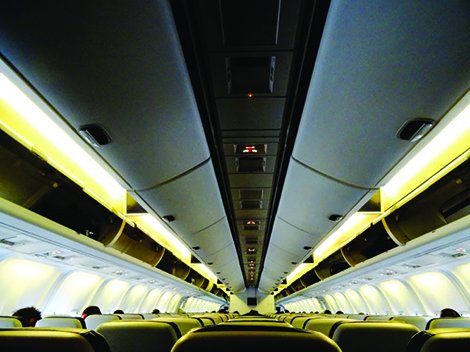What you can and can’t take on a plane. You might be surprised.
Your travel plans could hit the skids if you board a plane unwittingly carrying a banned item.
Airport security will likely pick up on goods which aren’t allowed and confiscate them, so the experts say it’s worth taking extra time before packing and heading to the airport to familiarize yourself with what you can take with you.
Many items have to go in the airplane’s hold as opposed to carry-on baggage with the passenger.
Here is a guide to some of the items banned by airlines, or where special measures are in place, as summarized by StressFreeCarRental.com, an online service for travelers renting vehicles.
Fishing rods
Fishing rods must usually be transported in the cargo hold, as they’re likely to exceed the maximum size of item allowed for carry-on items. Collapsible fishing rods which can be folded away may be allowed, depending on the airline.
Drills
Both drills and drill bits are classed as either sharp or dangerous items and can’t be brought in your hand luggage. These items will not be allowed through the security checkpoint if you have them in your carry-ons.
Liquids, food
You can’t take liquids through security in hand luggage in quantities over 100 milliliters (ml) or more than one litre in total. Liquids are classed as those foods which have high liquid content and includes oils and pasta sauces. Solid food such as fruit and sandwiches are fine, with some restrictions. Peanut butter is one. To meet safety standards, you can only bring a jar of peanut butter containing less than 100 ml, as it is classed as a liquid and can be confiscated by airport security if you are carrying any more. In the same way as peanut butter, creamy, soft cheeses such as goat cheese and brie and considered liquids and must be within the allowed limits of less than 100 ml.
Badminton racquets
Badminton racquets and bags aren’t allowed on flights as hand luggage because they exceed maximum size restrictions. Checked-in luggage is your best plan to transport badminton equipment.
Cigarette lighters

The rules allow passengers to take one lighter on a plane, but they must keep it on their person throughout the flight. E-cigarettes are banned from hold luggage. Lighter fuel is also not allowed on a flight.
Drones
The technology around drones continues to evolve, so the rules around carrying these items on a plane are also changing. Airlines differ in their guidance about what is allowed, so find out before setting out. Rules are in place around the type of batteries the drone uses and the size of the propellers.
Peroxide
Hair dye containing chemical peroxide is classed as chemicals and toxic substances by airlines in the same way as fire extinguishers and tear gas, and are therefore banned. Same goes for all oxidizers and organic peroxides, including bleach.
